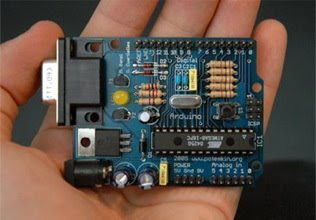
Thursday, April 9, 2009
Who's Got Some Intel from SmartFabrics 2009?

Wednesday, November 12, 2008
Open-Source Hardware for Interactive-Textiles (OSHIT)
Lest we forget that there are both open-source for electronics, but ALSO for sewing.

The first question that comes to mind is "how will companies make money?" Well, they're going to have to sell products...good products.
Tuesday, November 4, 2008
Plastic Electronics recap

Tuesday, October 28, 2008
Thursday, October 23, 2008
Plastic Electronics in Berlin
Fibretronic puts a new spin on Interactive Textiles
 The idea is that the largest cost drivers (control modules, etc) are separated from the soft-goods and can be purchased separately. So we could theoretically buy several cheaper "enabled" garments and only one control module.
The idea is that the largest cost drivers (control modules, etc) are separated from the soft-goods and can be purchased separately. So we could theoretically buy several cheaper "enabled" garments and only one control module.
 Exactly how much this will lower the barriers to entry for other remains to be seen, but hopefully this will catch on. Anyone else think this is a good idea?
Exactly how much this will lower the barriers to entry for other remains to be seen, but hopefully this will catch on. Anyone else think this is a good idea?
Tuesday, September 30, 2008
Iverson, Watch Out!

This sleeve provides audible feedback to the user as it undergoes mechanical stresses -- in other words, each movement provides a sound. For sports that require a precise and repeatable motion (jumpshot anyone?) the sleeve can be used as a training aid. Earlier applications of the technology were used on knee sleeves to assist users on "landing" after jumping -- probably a little more of a stretch in my eyes. If anyone remembers the presentations from CSRIRO back in 2002-2003, they compiled a bunch of gruesome sports injuries which their research would eventually prevent -- I never saw so many people in a room squirm in their seats in unisom.
 We'd love to hear from anyone who has actually used these sleeves as training aids -- it is an interesting concept, but how well does it work?
We'd love to hear from anyone who has actually used these sleeves as training aids -- it is an interesting concept, but how well does it work?

